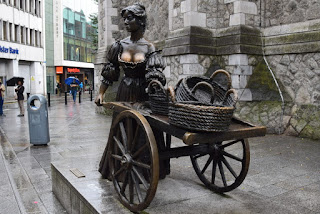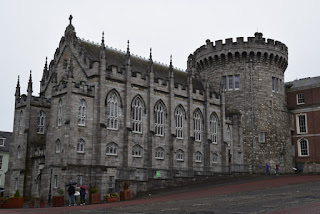Cruising across the Atlantic has not really appealed to
me as I undertook the voyage as a 5 then 8 year old on Ivernia and returning on
Queen Mary. However, travelling via Iceland and Greenland had substantial
appeal when it appeared as a Silverseas cruise (especially given a sizeable
credit arising from issues on the Galapagos voyage).
So we set off from Southampton to Montreal on the route
shown here.
Our first port Fowey (pronounced Foy) was not exactly a
long haul from Southampton. We arrived to a beautiful sunrise.
And had to reverse into the harbour with tugs fore and
aft guiding us past numerous small boats. Silver Whisper is much smaller than
the Queens so can enter many more ports.
It is a lively port town with many little sail boats
happy to get a closer look at us.
We walked into town and by coincidence Les and Carol
were holidaying in the area so we decided to meet up at the church.
A lovely little township with great weather making
meandering the order of the day so as to take in the sites. As we developed an appetite a Cornish pasty for lunch became a bit of a focus. However the bakers did not have tables. Fortunately one coffee shop saw the attraction of allowing us to eat outside pasties in their shop and benefitted from us purchasing coffee and deserts. Seeing Les and Carole twice in one
trip was unexpected and a good way to finish our final day in England.
After a bit of a lumpy crossing of the South Irish Sea we
arrived in Cobh (pronounced Cove) in Ireland. It is the second largest natural
port in the world (Sydney of course being number one).
On this voyage we were once again treated to the fun of travelling
with cousin Pam and Robin. Pam decided that with a number of sea days ahead
some knitting wool and needles were appropriate so we headed off in a taxi to
Cork. You could really eat well here with a wonderful array of foods in the
English Market although some of our team were not that impressed with the offer of
Tripe or Trotters.
The city is an attractive mixture of old and new. We
wondered through to the cathedral and then the reason for Ireland’s green land
became quite apparent as the heavens opened so we took a taxi and headed back
to the ship.
No prizes for guessing our next port.
Guinness was to be the focus of the first half of the
day as we walked through to the city centre via some well tended buildings.
Our second visit to the Guinness storehouse was just as
enjoyable as our first (see 2010 blog) and there were a number of new exhibits.
We were all taken by the film of Coopers making barrels.
And of course the reward of a pint when at the top bar
with its wonderful views.
We retraced our steps through the town and passed Molie
Malone whom Robin thought was selling melons rather than cockles and mussels.
The lamp standards caught Helen’s attention and looked
good against the grey sky. (This is a colour photo!)
Helen and I visited Dublin castle which is quite a
small building and courtyard with what appears to be more like administration
buildings.
Inside, although the number of rooms was small they
were quite beautiful. The State corridor with its up lights was stunning and
included three statues from the late 17thC referred to as the Cloncurry
marbles.
St Patrick’s hall would have been the place to be in
1897 when it was used for a dinner to celebrate Queen Victoria’s 60th
year of reign.
As we cruised North our final European port was
Belfast. A beautiful sunny day awaited.
Helen and I decided on a walk around the docks to the
Titanic exhibition. Much of the docks area has been upgraded with new offices
and streetscapes around the old Clarendon dry docks.
At the end of the docks is Belfast’s Millennium bridge – a
somewhat more conventional structure to it’s London equivalent but still
attractive.
As we approached what looked like a Guggenheim inspired building housing
the Titanic exhibition we passed the Halitone docks where Nomadic (one of two
tenders built for Titanic) could be visited. The two passenger bridges were to accommodate First
and Second class travellers.
Nomadic was built in 4 months and commissioned in 1911.
She survived two world wars and had almost 100 years of active service. We
spent over an hour wandering about her decks and looking at the various displays.
One of which was her use as a tender in Cherbourg
serving amongst others Queen Mary in the ‘50s. I suspect without knowing it at
the time that I would have seen her alongside when we sailed back to England in 1958. Here is a picture of a picture of Nomadic alongside Queen Mary.
Titanic and thousands of other ships were built by the
Harland and Wolff shipyard. Although shipbuilding is no longer a major industry
the yard is still operating and is currently focussed on the construction of
wind turbines which were dockside awaiting shipping.
At the end of the day we strolled into the city centre
to purchase blueberries and caught the shuttle bus back to the ship outside the
City Hall. So farewell to Europe and off to Iceland.



























No comments:
Post a Comment